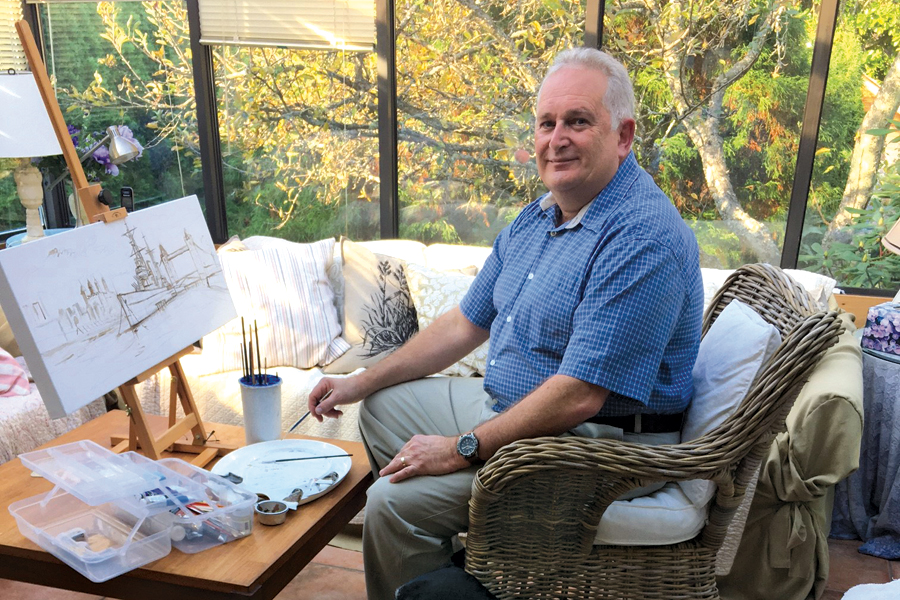Artist’s work inspires to educate
By Lookout on Nov 06, 2017 with Comments 0

Seguna works inside his Oak Bay solarium on one of his latest projects.
Peter Mallett, Staff Writer ~
When Lieutenant Commander (Retired) Paul Seguna sits in front of his easel, blank canvas before him, he draws on his 42-year military career as inspiration for his next piece of art.
Four decades of service has brought him postings in 14 warships on both coasts, and deployments on Canadian Armed Forces operations in Rwanda, Bosnia and Kosovo.
This is why much of his work pays homage to bygone eras of military activity, in peace and in war time, at sea and on land.
“If you have an artistic bent and are creative, you apply your life experiences in the art you create,” he says.
His artistry comes naturally, with no formal training, just a desire to release that burning idea onto the canvas. A set of pencils and sketchbook have never been far from him, even as a child growing up in Sydney, Australia.
“I was continuously drawing everything and anything in my school note books,” he recalls. “It was a form of self-expression for me back then, and also today. People who have any kind of interest in art or music just seem to gravitate to expressing their creativity; it’s a natural process for me.”
His paintings have been showcased in high-profile public art displays including the National Aviation Museum and National Archives of Canada.
His preferred paints are acrylic and oil-based; his preferred canvas size 24” x 36”. Like other artists Seguna uses photographs as reference, but the end result is his vision.
“Art can fill a role in visually telling the story; a role it shares with photography,” he says. “But art can also create those scenes that you might not get with a photograph. The power of the visual medium and the artist’s composition is key.”
That process came together in his Cold-War era painting Grey Ghost Flypast that features a formation of four McDonnel F2H-3 Banshee fighter jets flying over HMCS Bonaventure. He says both the ship and the fighter jets were important for him to paint because they highlight a bygone era of Canadian naval power.
“At the end of the Second World War Canada had the third or fourth most powerful navy in the world, and in subsequent years maintained a significant naval capability. It’s a rich history, but largely only folks interested in military and naval history are aware. This is my motivation, to help bring our history to life, and being able to do it hopefully with some technical confidence.”
Even though he has worked on many of the vessels he’s painted, and can draw from first-hand experience of his career for many others, he says historical accuracy is often his biggest challenge, and doing proper research on everything he paints is crucial.
“This is important to me because the audience who looks at my art work are normally former military or have a big interest in military history,” he says. “The challenge is trying to include your artistic licence, but being limited to some degree by technical accuracy.”
Seguna recently retired from the military this past September at age 60. With his days in the military now at an end, and a house move completed, he is now busy setting up a new art studio.
As he organizes his paints, brushes, easel and canvas, his next project is churning in the background – painting all 14 warships he has served on.
To find out more about Seguna’s work visit his website www.segunart.com.
Filed Under: Top Stories
About the Author:





